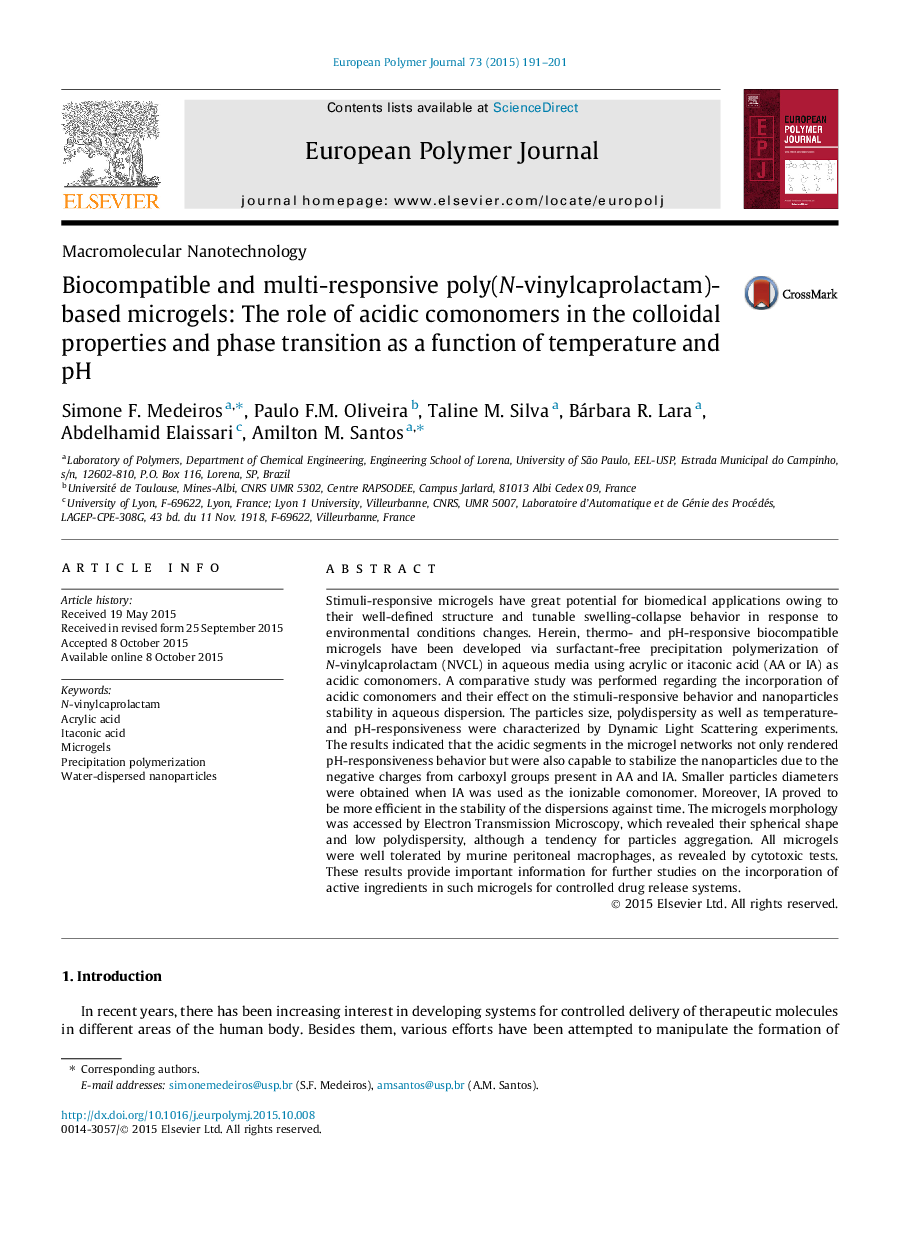| Article ID | Journal | Published Year | Pages | File Type |
|---|---|---|---|---|
| 1400355 | European Polymer Journal | 2015 | 11 Pages |
•Sensitive hydrogels were synthesized by surfactant-free precipitation polymerization.•The type and concentration of comonomer played an important role on their properties.•The hydrogel nanoparticles were non toxic and spherical in shape with low polydispersity.•These materials may be used to develop new controlled drug delivery systems.
Stimuli-responsive microgels have great potential for biomedical applications owing to their well-defined structure and tunable swelling-collapse behavior in response to environmental conditions changes. Herein, thermo- and pH-responsive biocompatible microgels have been developed via surfactant-free precipitation polymerization of N-vinylcaprolactam (NVCL) in aqueous media using acrylic or itaconic acid (AA or IA) as acidic comonomers. A comparative study was performed regarding the incorporation of acidic comonomers and their effect on the stimuli-responsive behavior and nanoparticles stability in aqueous dispersion. The particles size, polydispersity as well as temperature- and pH-responsiveness were characterized by Dynamic Light Scattering experiments. The results indicated that the acidic segments in the microgel networks not only rendered pH-responsiveness behavior but were also capable to stabilize the nanoparticles due to the negative charges from carboxyl groups present in AA and IA. Smaller particles diameters were obtained when IA was used as the ionizable comonomer. Moreover, IA proved to be more efficient in the stability of the dispersions against time. The microgels morphology was accessed by Electron Transmission Microscopy, which revealed their spherical shape and low polydispersity, although a tendency for particles aggregation. All microgels were well tolerated by murine peritoneal macrophages, as revealed by cytotoxic tests. These results provide important information for further studies on the incorporation of active ingredients in such microgels for controlled drug release systems.
Graphical abstractFigure optionsDownload full-size imageDownload as PowerPoint slide
